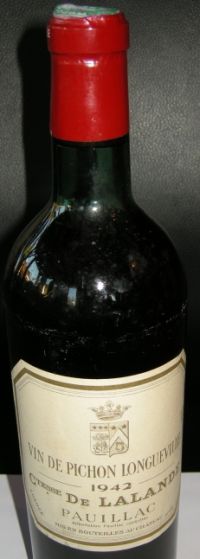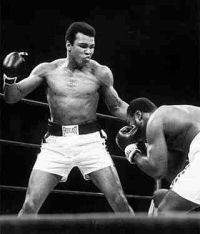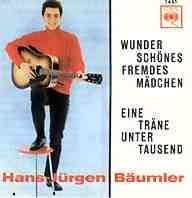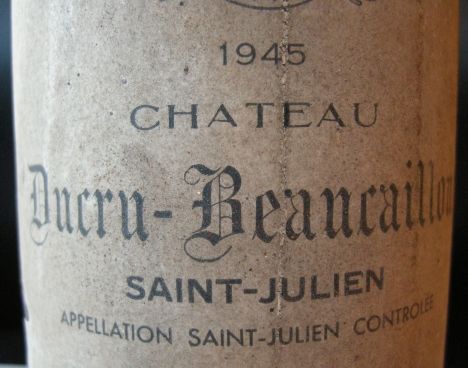No, there is no typing error in the title! It is correct: "historical drinker" and not "historical drinker". An important difference. Wine can also mean history, contemporary history!
There are even some wine lovers who hardly think about it. For them, dates are at best indications of quality. For example, in the Bordelais the legendary years 1945, 1947, 1961, 1982. Vintage cards - often in credit card format - provide information at any time in the form of a simple point system or more or less filled glasses. 1992: Switzerland only three points, Chile even only two, Spain on the other hand 4, which means "very good", Pomerol 3, Germany is missing on my little map.
But I'm not talking about this general vintage analysis, nor about the far more differentiated vintage analysis that Robert Parker, for example, prefaces his Bordeaux book with: "Description of Bordeaux vintages from 1945 to 2001" with information on weather, harvest times, degree of ripeness, and so on and so forth.
 |
| Two typical vintage cards in credit card format |
With wine, vintages are something else entirely, comparable to the annual rings of trees, namely bearers of contemporary history, witnesses to the historical past.
A few days ago, we - a happy birthday party - had a Bordeaux Pichon Longueville Comtesse de Lalande 1942 in the glass. 1942 - phew! Not a good vintage in Bordeaux either. René Gabriel writes: "extremely rarely offered, the weak Latour is nevertheless sold around 600 euros (meanwhile even more expensive!), the vintage is considered mediocre." Gabriel awards points: Haut-Brion 16/20, Latour 13/20, accompanied by the devastating statement: "the guarantee that they are still drinkable seems very small."
They are still drinkable, at least our "Lalande 1942". The first bottle, however, is what the wine guide brutally rates as "past": mushroomy, sweetish, smelling of dark beer, rotten... But the second bottle: cocoa, black tea, still spicy, pleasant on the palate, still supporting tannins, leathery but velvety bouquet. We are speechless. 66 years old, a little tired but still vif, with fading fine structure.
Ultimately, however, this wine experience is not about pleasure notes at all. It is about the past, about history. Whether it is 12 Gabriel points or 72 parker notes is irrelevant. What is much more important is that the birthday boy's father is standing at the Russian border, in what is now eastern Poland, at the time when the wine was bottled. It is war. In a small town in the Odenwald, a woman gives birth to a girl, her father is away, at the front. More and more often she has to take refuge in the bunker. Bombing!
 |
| Birthday wine: Pichon Longueville Comtesse de Lalande 1942 |
I didn't experience that time, at least not in such a way that I can fill it with memories. I was three at the time, living in Switzerland, which had been spared from the war.
And yet, while I drink small sips of the wine, historical memories open up, I mutate into a history drinker. 1942: Birth of... Cassius Clay, who later rises to boxing heaven; Hans-Jürg Bäumler, the figure skater, with the dreams of the "beautiful foreign girl"; Michael Bloomberg, who shows how to earn (and lose) billions on the stock exchange; Frank Elstner, who shapes the new television age; Jimi Hendrix, the ingenious drug victim; Wolfgang Schäuble, who despite paralysis ensures peace and order in Germany; Jochen Rindt, who 28 years later runs to his death at over 250 kilometres per hour; Barbara Streisand, the attractive woman with the silver eyes and the big nose.
1942: Second World War. Wannsee Conference with the start of the Holocaust; Lübeck is the first major German city to be bombed; Hitler appoints himself supreme court ruler; the German 6th Army attacks Stalingrad, leaving more than 700000 dead after its defeat. 1942: Albert Speer becomes responsible for the war economy; Wernher von Braun works on the V2 retaliation weapon in Peenemünde 1942: Glenn Miller receives the first "golden record" in music history; Hans Albers is the star in "Great Freedom No. 7"; Horkheimer and Adorno work in exile on the "Dialectic of Enlightenment".
 |
| Famous 42er: Cassius Clay% alias Muhammed Ali |
Stop! We have long since left the wine section and dived into history. Yes, I confess to being a history drinker. Apart from the enjoyment of wine, which can be described with familiar terms such as "medium body, dried tannins, faded fruit...", what fascinates me about older wines is their testimony to history and stories. The two bottles were processed in the middle of the war in occupied France by people, for people who even then loved wine, who perhaps - despite war fears - were able to enjoy it. A product created for consumption, with the means and knowledge of the time. A year of plant life - and its fruit - captured, preserved in bottles, stored in dark cellars and still (in the good case) to be enjoyed today. Perhaps not to be enjoyed, only to be tasted and to participate in a knowledge of the world events of an entire year that has only been preserved in fragments.
History drinkers do not have it easy, they are constantly fighting against the common values of enjoyment, fighting also against the marketing of the witnesses of time in the form of bottles. Vintages of yesteryear that are still halfway consumable are traded at a thousand francs or more per bottle. Not because they are so good, but because they embody living (even a wine lives!) documents of time; because they can still be drunk and experienced today - no differently than many, many years ago.
 |
| And another once idolised 42er: figure skating star and hit bard Jürg Bäumler. |
Unfortunately, the disdainful market has also discovered the "history drinkers". Especially long-lived wines are disproportionately expensive, not because they are better, but because they are longer-lived. They are called "birthday wines", because drinking a wine on a birthday that is as many years old as you have lived is one of those special experiences, especially when you have grown older.
With the 2000 vintage, the Bordelais in particular has demonstrated how to turn history into money. Even in the run-up to this natural event, prices for the "bad" 1997 vintage climbed disproportionately. Those wholesalers who did not want to accept the price simply lost favour with the lucrative millennium business. No one wanted or could afford this, so they paid The 2000 then became - additionally ennobled by a good wine year - big business. Even today, 2000 Bordeaux are only available on the market at exorbitant prices. Mouton Rothschild at 1800 Euros, Sociando-Mallet at 730 Euros, Troplong Mondot at 1500 Euros, Latour even at 7'500 Euros.
 |
| The legendary 1945: an excellent wine year and - the war is over. |
History drinkers live dearly! They can only pay for their passion if they stick to small vintages. For example, 1972, the year our daughter was born, historically not quite so exciting: Rainer Barzel failed by two votes in his attempt to replace Willy Brandt as Federal Chancellor. In that year, there is also hardly any Bordeaux that you can still drink today. And yet: the undrinkable Latour 1972 costs around 300 euros, Petrus even 600 euros. Historical drinking prices for wines about which René Gabriel says: "Strictly speaking, not a single wine deserves to be even half-praised any more".
Historic drinkers are a special breed that can be recognised by the fact that they dare to stubbornly hold on to the historic cork - supposedly against all reason.
Sincerely
Yours sincerely
Peter (Züllig)